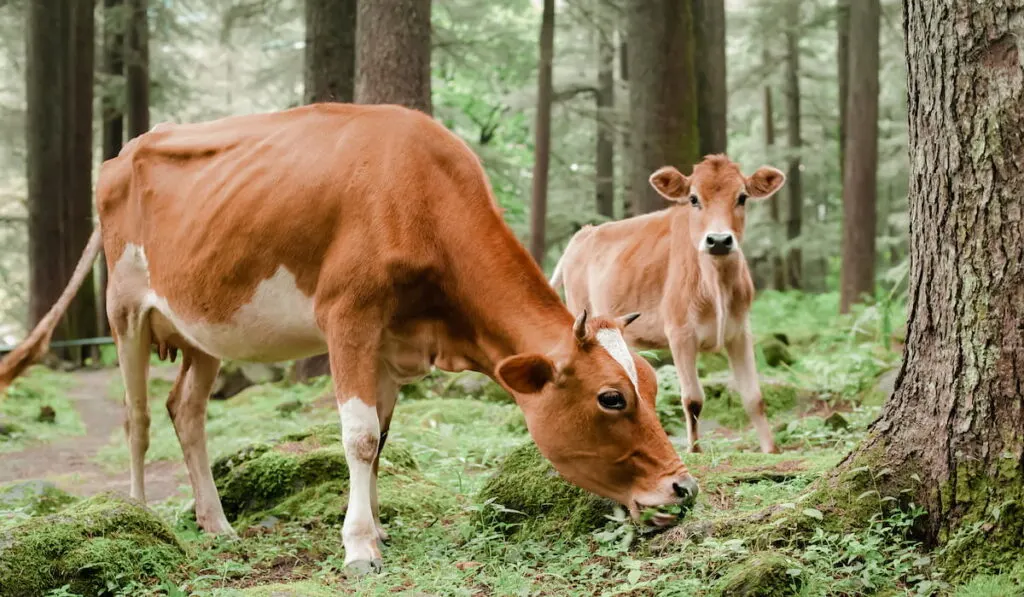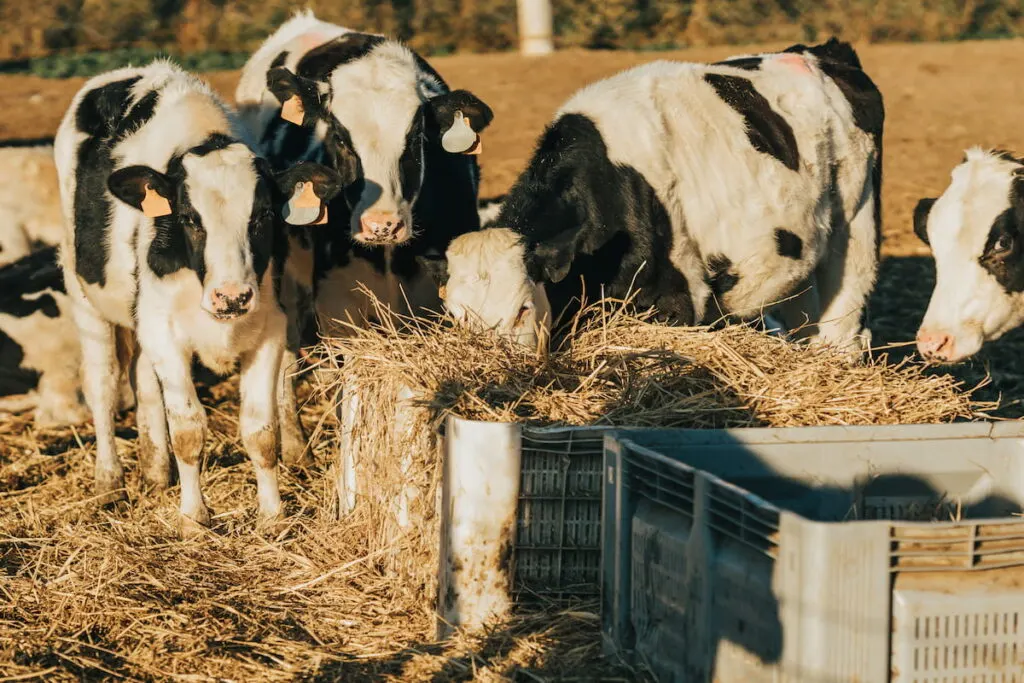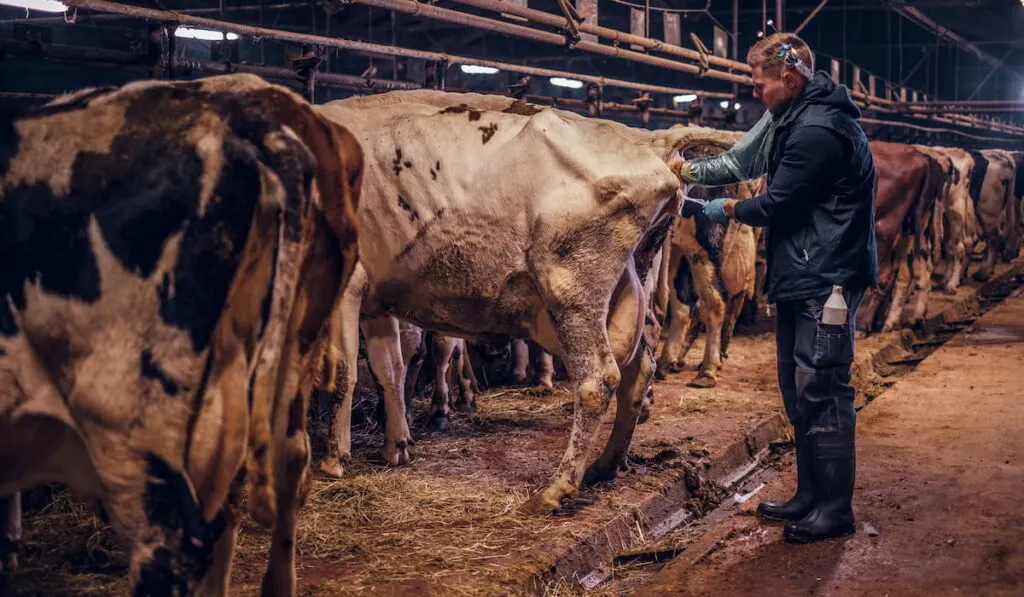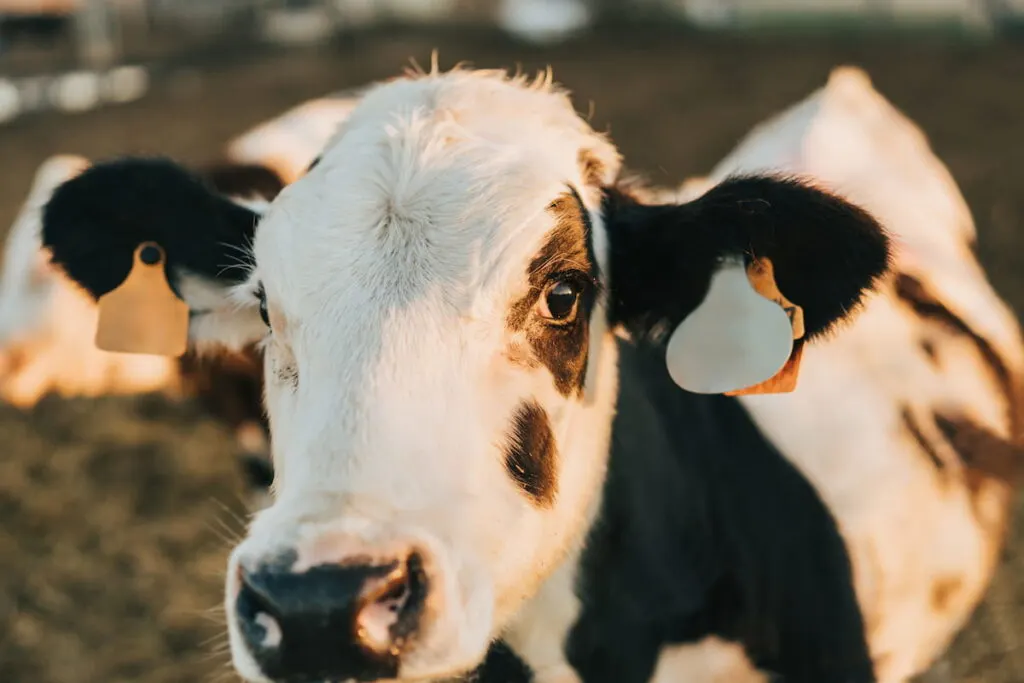Every cow owner should know when the time is suitable to breed their animal. If you try too early, you risk the life of your cows. On the other hand, you probably won’t get the desired results when you try to breed too late.
Heifers first show heat signs when they are between nine and 22 months old. Once they are in heat, it’s a good sign that they are ready for breeding. Different cows will reach sexual maturity at different rates, which is one of the reasons for the wide range above.

Most cow farmers will wait until a cow is at least one year old or 15 months old before breeding. This gives the cow more time to grow and mature before breeding. If a cow is too young, breeding can lead to health problems because the animal is too small.
There’s a lot that goes into deciding whether a cow is ready for breeding. We try to simplify things by explaining what needs to happen before safe, responsible breeding can happen. Here are some things you should know before you try to breed a cow.
Table of Contents
What Is the Earliest a Cow Can Breed?
The main risk with early breeding is that the heifer’s body isn’t developed well enough to pass a calf through its pelvis. In some cases, they require c-section surgeries to get the calf out without killing the mother. Unfortunately, many cows die every year because they are bred too early.
Of course, surgery on a cow is costly and typically outweighs the benefits of breeding. And the new calf will need to be fed by the bottle because the cow won’t be able to feed it milk.
Calving isn’t the only issue. If the heifer is too small, she’ll run into trouble with the herd as she tries to watch and nurture the new calf. That’s why many experts recommend you wait until the heifer is at least two-thirds the size of the herd average.

Finally, a large bull can hurt a cow that’s too small to breed. Bulls weigh a lot, and the mating ritual is typically quite rough. If the heifer is too young, it can get injured or killed when breeding.
What Age Do Cows Go into Heat?
The average cow goes into heat after they’re nine months old. Every cow varies, but you can expect them to hit sexual maturity between nine and 22 months old. Some will go into heat at six months, and other cows will take a bit longer.
Here are some signs your cow is in heat.
- Restless – Cows in heat act agitated and tend to move around much more than usual. She will low more frequently and is more likely to wander away from the herd.
- Licking – Cows in heat usually lick other cows and will even try to mount cows around her. She’ll also allow other cows to mount her rather than move or act defensively.
- Swollen Vulva – A cow in heat will have swollen genitals. You can notice a cow in heat when its tail is hanging higher and to the side of the vulva.
- Urination – Cows in heat, urinate in short spurts and sniff the air after finishing.

Can a Six-Month-Old Heifer Get Pregnant?
Most people unfamiliar with raising cattle are surprised at how quickly cows mature. Yes, a cow can get pregnant after six months of age, though there are concerns around early breeding which we’ve highlighted above.
One reason cattle owners want to know the earliest that cows can get pregnant is that many young heifers are grazing and living near bulls that can get them pregnant if and when they go into heat.
If you keep a young heifer near an aggressive bull eager to mate, there is a good chance the bull will mount the heifer and impregnate her. There is also a decent likelihood the heifer will suffer injuries if they’re too small.
Separate any heifers from bulls at around six months until they’re big enough and mature enough to breed.
Can a 7-Month-Old Bull Breed a Cow?
The majority of male calves are castrated and sold at markets across the country. Therefore, there are not many reasons to keep a lot of bulls. Only the highest-quality males are kept as breeding bulls to provide semen for the breeding cows.
Bulls from dairy breeds usually reach puberty at around seven to eight months. However, cattle farmed for beef tend to take a few months longer to reach sexual maturity. Usually, cattle farmers wait until around the 10-month mark to start breeding their bulls.

Most bulls older than two years old have better fertility and will want to breed more regularly. Unfortunately, younger bulls sometimes fail to express much interest in the opposite sex, so breeding young bulls can be an exercise in frustration.
Because breeding can be such a high-stakes game, most bulls undergo a pre-breeding veterinary examination where the vet takes a sperm sample and tests it. They also look at the bull’s legs and hips size to determine whether the bull will have an easy time mounting heifers.
Here are some physical signs to know when your bull is ready to mate.
Leg and Hip Size
Bulls are large, heavy animals, so rising on hind legs to mount a heifer or cow is no small feat. First, you need to know whether a bull is big enough to reach the cow’s vulva. A young bull may not be tall enough on its hind legs.
Scrotal Size
Scrotal circumference is one of the biggest things to look for regarding breeding readiness. Bulls with large scrotums usually sire heifers that develop faster and can breed earlier. Conversely, bulls with smaller scrotums deliver poorer results.
Conditioning
A breeding bull should be in good overall health no matter how young they are. They need to be able to meet the breeding standards required. Otherwise, it can be a waste of time and money. A vet will evaluate the bull’s health to know whether they’re ready to start breeding.
Exceptions Are Always Possible
Even though most commercial operations prefer a bull over two years and a heifer at around one-year-old, it doesn’t mean younger bulls and heifers can’t mate.
Cattle farmers deal with surprise pregnancies all the time, and it can happen in large herds where it’s hard to track everything that’s going on. Likewise, inexperienced owners can fail to spot the signs of heat or breed their cows too early.
Natural Insemination vs. Artificial Insemination (AI)
Many of the same concerns exist, whether you’re breeding a cow via natural or artificial insemination (AI). Obviously, AI impregnates cows without the presence of a bull, so there is a lower chance of injuries or failure to mate.

Most cattle farms in the United States use AI because it’s faster and more cost-effective. As a result, you avoid all the costs of bull ownership, and there are no accidental pregnancies.
Prized bulls can sell their semen across wider areas, which allows farmers to increase superior genetics among their cattle. However, with natural insemination, a good bull can only be in one place at a time, and owners will likely be hesitant to travel long distances for breeding.
The main disadvantages of AI are that it requires a lot of human labor, and only skilled technicians will have high success rates. Also, timing is critical, so cattle farmers must be very involved in the process to guarantee good results.
With natural insemination, you have to let the bull and the cows spend time together and wait for breeding to happen. This is the most reasonable option for smaller cattle farms or hobbyist cattle owners.
Monitoring Heifer Maturity
You need to be sure of the heifer’s ability to stay healthy and robust enough through gestation. They’ll be putting on a lot of weight, so if they’re too tiny or frail, it could be too much for them.

The best way to avoid breeding a heifer too early is to gauge its size relative to cows in your herd. Once they’re at least two-thirds as big as your average cow, you can start thinking about breeding them.
When you’re ready to breed, you can start introducing bulls into the herd. Ideally, a single bull will be with a group of forty cows. Let them stay together for two or three months and move them around once the time is complete.
Avoid Early Heifer Breeding If Possible
Avoid breeding heifers early to prevent health issues and accidental injuries whenever possible. While a six-month-old heifer can get pregnant, it could come with more complications than you want.
Wait a few more months before you start to breed to guarantee that your heifer is strong and large enough to calve when the time comes. They need to be big enough to pass the calf and raise it after it is born.
